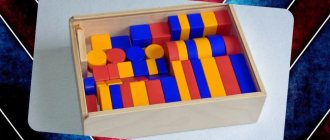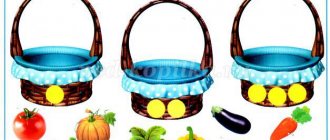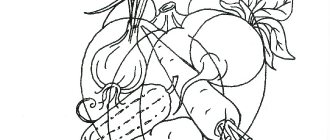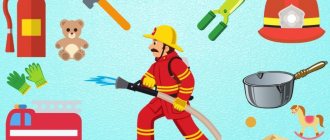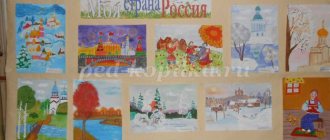Didactic games for the formation of the syllabic structure of words
The concept of “syllable structure of a word” is usually understood as the relative position and connection of syllables in a word. It is no secret that mastering the pronunciation of the syllabic structure of a word is a great difficulty for preschoolers. But mastering the syllabic structure of a word is one of the main prerequisites for mastering literacy. The lack of development of skills in syllabic analysis and synthesis entails the manifestation of dyslexia and dysgraphia during schooling.
The problem of motivation is one of the central ones in speech therapy work. Very often, knowledge of speech correction techniques and the desire of a speech therapist are not enough for the positive dynamics of children’s speech development.
It is known that the use of play techniques in correctional work prevents children from getting tired, supports their cognitive activity, and increases the effectiveness of speech therapy work in general. The words “learn by playing” remain relevant today.
A didactic game is both a method of teaching preschool children, a form of education, and a means of comprehensive education of a child’s personality.
I present to your attention didactic games, the purpose of which is to form the syllabic structure of words in preschoolers.
“When you say a word, how many syllables do you say in it?”
The first line shows numbers from one to four. On the second line are pictures whose titles have a different number of syllables.
Option 1.
The child chooses a picture and determines the number of syllables in its name. Then selects the corresponding number.
Option 2.
The child moves the first ruler so that a number appears in the window. Then it searches for a word with the appropriate number of syllables.
"Build a tower"
Modern children's construction sets offer limitless imagination not only for the child, but also for the teacher.
The children are offered object pictures with words of different syllable structures. Based on the number of syllables in a word, children build a tower from construction set parts. Then they compare the towers and determine which word is the largest and which is the smallest.
"Ladder"
Up the wonderful little staircase Now I’ll go up. I will count all the syllables, I will climb everyone higher.
Speech therapist: “Help the little people climb their steps.”
Children use pictures to determine the number of syllables in a word. They walk up the steps with their fingers, naming the syllables of the word, place the little man on the step of the last syllable, and determine the number of syllables in the word.
"Dress up the Christmas tree"
Children decorate the Christmas tree. The largest lower branches are decorated with toys with pictures, the names of which have three syllables.
Smaller branches - two-syllable words. The smallest top branches are monosyllabic words.
“Help Slogovichk”
We go with the guys to visit Slogovichok and help him collect two-syllable words - the names of toys from the halves of Kinder Surprise eggs.
We put each toy in an egg with its name.
"Snowmen"
The kids have been making a snowman since the morning. He rolls snow globes and, laughing, connects them.
The speech therapist invites children to build snowmen so that words can be read on them.
"Help the clown collect the words"
On the clock dial, instead of numbers, there are balls with syllables.
Speech therapist: “The clown was juggling balls and mixed up all the words. Help the clown collect the words."
Children move the hands of the clock, connecting syllables to form two-syllable words.
Ryabova A.M., teacher-speech therapist
- Didactic games for the development of phonemic representations and syllabic structure
- Correctional speech therapy session to overcome violations of the syllabic structure of words in 2nd grade students of a comprehensive school
- Restoration of the sound-syllable structure of a word in patients with efferent motor aphasia
- Traditional and modern methods of correcting the syllabic structure of words in children with ODD
- Didactic games and exercises for the formation of phonemic analysis in primary schoolchildren with speech disorders
( 11 liked, average score: 5.00 out of 5)
Loading...
Content
INTRODUCTION 5
FEATURES OF FORMATION OF THE SYLLABLE STRUCTURE OF THE WORD IN CHILDREN WITH SEVERE SPEECH IMPAIRMENTS 9
FEATURES OF IMFORMED SYLLABAL STRUCTURE OF A WORD AT DIFFERENT LEVELS OF GENERAL SPEECH UNDERDEVELOPMENT 9
METHODOLOGY FOR FORMING THE SYLLABIC STRUCTURE OF THE WORD IN CHILDREN WITH SEVERE SPEECH IMPAIRMENTS 10
Propaedeutic stage 11
Features of working with non-speaking children 11
Development of speech understanding in non-speaking children 12
Activation of speech imitation 13
Formation of the first forms of words 15
Features of the formation of the syllabic structure of words with a combination of consonants 17
Features of the formation of the syllabic structure of a word based on the material of phrasal speech 18
VOCABULARY TASKS 19
SOUND IMITATION 19
TWO-SYLLABLE WORDS FROM OPEN SYLLABLES 21
THREE-SYLLABLE WORDS FROM OPEN SYLLABES 24
ONE-SYLLABLE WORDS FROM CLOSED SYLLABLES 27
TWO-SYLLABLE WORDS FROM CLOSED SYLLABLES 29
TWO-SYLLABLE WORDS WITH CONSONANTS IN THE MIDDLE OF THE WORD AND AN OPEN SYLLABLE 33
TWO-SYLLABLE WORDS WITH CONSONANTS AT THE BEGINNING OF THE WORD AND AN OPEN SYLLABLE 36
TWO-SYLLABLE WORDS WITH A COLLECTION OF CONSONANTS IN THE MIDDLE OF THE WORD AND A CLOSED SYLLABLE 39
TWO-SYLLABLE WORDS WITH A COLLECTION OF CONSONANTS AT THE BEGINNING OF THE WORD AND A CLOSED SYLLABLE 42
THREE-SYLLABLE WORDS WITH A CLOSED SYLLABLE 44
THREE-SYLLABLE WORDS WITH CONSONANT COLLECTIONS (IN DIFFERENT POSITIONS) AND AN OPEN SYLLABLE 47
THREE-SYLLABLE WORDS WITH A COLLECTION OF CONSONANTS (IN DIFFERENT POSITIONS) AND A CLOSED SYLLABLE 49
ONE-SYLLABLE WORDS WITH A COLLECTION OF CONSONANTS AT THE BEGINNING AND END OF THE WORD 50
TWO-SYLLABLE WORDS WITH TWO CONSEQUENCES 52
THREE-SYLLABLE WORDS WITH TWO TEXT 53
FOUR SYLLABID WORDS FROM OPEN SYLLABLES 54
FIVE-SYLLABLE WORDS FROM OPEN SYLLABLES 56
FOUR SYLLABID WORDS WITH CLOSED SYLLABLE AND (OR) CONCLUSIONS 58
FIVE-SYLLABLE WORDS WITH CLOSED SYLLABLE AND (OR) CONCLUSIONS 60
WORDS WITH COMPLEX CONCLUSIONS (THREE OR MORE CONSONANTS IN A SERIES) 62
SENTENCES USING COMPLEX SYLLABILITY WORDS 64
Appendix 71
ILLUSTRATIONS FOR THE SECTION OF SOUND IMITATION 71
Exercise “Repeat the same”
Goal: learn to reproduce a given rhythm. Materials: ball, drum, tambourine, metallophone, sticks. Progress of the exercise: The speech therapist sets the rhythm with one of the objects, the child must repeat the same.
Exercise “Count correctly”
Goal: learn to count sounds. Materials: children's musical and noise instruments, cards with numbers, cube with dots. Progress of the exercise: Option 1. The child claps his hands (knocks on a tambourine, etc.) as many times as there are dots on the cube. Option 2. The speech therapist plays sounds, the child counts them and picks up a card with the corresponding number.
Exercise “Choose a scheme”
Goal: learn to correlate the rhythmic pattern with its diagram on the card. Material: cards with patterns of rhythmic patterns. Progress of the exercise: Option 1. The speech therapist sets a rhythmic pattern, the child selects the appropriate pattern on the card. Option 2. The child reproduces a rhythmic pattern according to a given pattern.
Exercises at the sound level:
- “Say the sound A as many times as there are dots on the die. Make the sound O as many times as I clap my hands.”
- “Find out what sound (series of sounds) I made.” Recognition by silent articulation, pronunciation with voice.
- Determination of a stressed vowel in a stressed position (in a series of sounds).
Exercises at the syllable level:
– Pronounce a chain of syllables while simultaneously stringing rings onto a pyramid (building a tower from cubes, rearranging pebbles or beads) – “Fingers say hello” – pronounce a chain of syllables while touching the fingers of the hand with the thumb on each syllable. - Count the number of syllables spoken by an adult. – Name the stressed syllable in the chain of heard syllables. – Memorizing and repeating chains of different types of syllables.
Word level exercises:
Ball game
Goal: learn to clap the syllabic rhythm of a word. Material: ball. Progress of the game: the child beats the rhythm of the word given by the adult with the ball.
Game "Telegraph"
Goal: to develop the ability to divide words into syllables. Material: sticks. Progress of the game: the child “transmits” the given word by tapping out its rhythmic pattern.
Game "Count, don't make a mistake"
Goal: to learn to divide words into syllables while simultaneously performing a mechanical action. Material: pyramid, cubes, pebbles. Progress of the game: the child pronounces the words given by the speech therapist and lays out pebbles (pyramid rings, cubes). Compare words: where there are more pebbles, the word is longer.
Ball game "Pass it on"
Goal: to learn to divide words into syllables while simultaneously performing a mechanical action. Material: ball. Progress of the game: children pass the ball to each other and at the same time name the syllable of the given word.
Game "Say the correct word"
Goal: to learn to distinguish correctly sounding words. Material: pictures. Progress of the game: the speech therapist pronounces the words incorrectly, the child names the words correctly (if it is difficult for the child to complete the task, then pictures are given to help).
Exercise “What has changed?”
Goal: to learn to distinguish between different syllable structures of words. Material: pictures. Progress of the exercise: the child explains the difference between words. Words: cat, cat, kitten, house, house, house.
Exercise “Find the longest word”
Goal: to consolidate the ability to divide words into syllables. Material: pictures. Progress of the exercise: the child chooses from the proposed pictures the one that shows the longest word.
Exercise “Count, don’t make a mistake”
Goal: to strengthen children’s ability to divide words into syllables. Material: pictures, cards with numbers. Progress of the exercise: The speech therapist shows pictures, the children show a number corresponding to the number of syllables in a word (a complication option is the number of a stressed syllable).
Exercise “Which word is different”
Goal: learn to distinguish words with different rhythmic structures. Material: pictures. Progress of the exercise: the speech therapist names a series of words, the children identify the extra word (use pictures if the children find it difficult). Words: tank, crayfish, poppy, branch. Carriage, bud, loaf, plane.
Exercise “Name the same syllable”
Goal: to consolidate the ability to compare the syllabic structure of words. Material: pictures. Progress of the exercise: the child must find the same syllable in the proposed words (airplane, milk, straight, ice cream).
Game “The end of the word is yours”
Goal: learn to synthesize words from syllables. Material: ball. Progress of the game: the speech therapist begins the word and throws the ball to the child, he adds the same syllable SHA: ka..., va..., Yes..., Ma..., Mi...
The material was prepared by teacher-speech therapist O. B. Zhaivoronok.
Didactic games for the development of sound-syllable analysis of words
8.“How many sounds did you hear?”
The teacher expressively pronounces individual sounds and syllables mixed together (m, ra, u, us, we, k...). Children clap 1 time per sound, 2 times per syllable.
9."Roll Call"
The teacher names different sounds mixed together - vowels and consonants. Children whose names begin with the named sound stand up.
10."Let's build a house"
The teacher says that he is going to draw a house and draws only one wall on the board. Children must name the parts of the house that need to be completed. You can name only those words that have the sound “r”. Children call: “Roof, attic, frame, porch, chimney. The teacher draws all the named objects schematically on the board.
11."Look up the word"
The teacher says that in the Russian language there are words that like to play hide and seek. These are short words, they are hidden in longer words. In order to find a short word, you need to divide the long one into syllables. For example, you need to find the word that is hidden in the word “sand”. (Children divide words into syllables - sand). What word was hidden? (Juice).
The teacher names other words in which the second syllable is an independent word: fisherman, Boris, pie, fist, beans, king. Children look for words “hidden” in them.
12."Carlson's Diet"
Goal: to teach how to find words starting with a given letter and read them (if it’s difficult, with the help of a teacher).
Benefits: 1) toy - Carlson;
2) cards with words:
M - milk, butter, meat, ice cream, fruit drink, marmalade, pasta;
K - candy, strawberry, coffee, cutlet, cupcake, potato, compote.
Progress: Educator: “Carlson revealed his little secret to me today. It turns out that in order to feel good and not get too fat, Carlson will go on a diet - one day he will eat foods that begin with the letter “M”, and the next day - with the letter “K”. This is what the doctor advised him and also wrote down the foods he should eat. But Carlson can’t read. So he came to us for help. Let's help him find products starting with the letter "M". Whoever finds it reads (if it’s difficult, the teacher helps). Carlson's diet can be any letter.
13."Chain of Words"
. Goal: develop attention, learn to find a word starting with a given letter.
Aids: 1) cards with words: nose, elephant, rhinoceros, geese, turkey, cow, orange, hole, watermelon, tooth, badger, mole, throne;
2) toy “Parsley”.
Organization: cards are laid out mixed on the table. Children stand around the table.
Progress: the game is played in two versions:
1. Educator: “Today Parsley will play with you. He can't read words yet, but he knows individual letters. Now Parsley will pick up a card with a word, and you must find the word starting with the last letter. Whoever finds it first gets a card. Let's see who is the most attentive and smart. For example, Parsley picks up the word “badger”; it ends with the letter “K”. You must find a word starting with this letter (mole).

